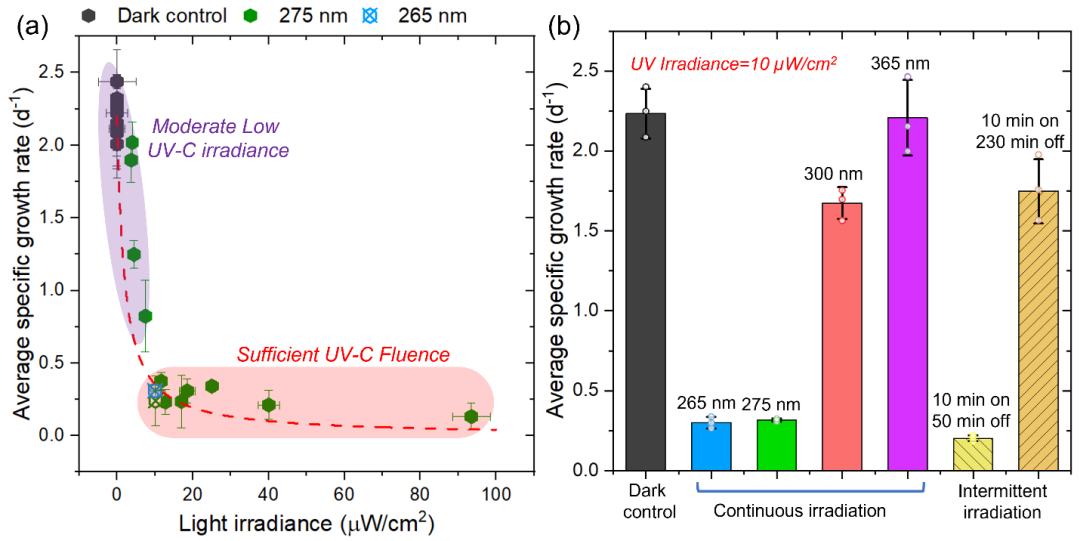
In a recent collaboration, Dr. Li Ling, associate professor at ADIIEE, joined forces with Prof. Paul Westerhoff and Dr. Zhe Zhao from Arizona State University to pioneer a groundbreaking technology focusing on side-emitting optical fibers. This innovative development unveils the UV energy threshold required for effectively mitigating biofilm on surfaces. This research is an extension of Dr. Ling's research work on optical fiber near-field light control and was published in the July 2023 issue of "Nature-Water".
Bacterial biofilms are ubiquitous on wetted surfaces in various natural and human-engineered systems. They can negatively impact water quality by harboring pathogens and disrupt operations through biocorrosion, bacterial fouling or clogging of valves. Germicidal ultraviolet (UV) light is a highly effective and widely used method for microbial control without secondary pollution, but the barrier in using UV is associated with optical obstructions and attenuations in water. Both of them lead to lower light energy reaching the surfaces where biofilm grows, decreasing the energy utilization efficiency.
Our team developed bendable, UV light-deliverable side emitting quartz optical fibers (SEOFs), and successfully inhibited biofilm growth under low UV doses. Energy-efficient intermittent UV-C duty-cycling achieved similar inhibition as continuous light exposure. Adjusting the light distribution along the fiber length reveals an energy threshold for biofilm mitigation on surfaces equivalent to 9 µW/cm2. UV-C light intensities above this threshold can inhibit biofilm formation, while the same approach failed for intensities below this threshold. Meanwhile, optical fibers that transmit UV-A (i.e., 365 nm) and UV-B (i.e., 300 nm) wavelengths can promote biofilm growth at the same energy level.
From a design perspective, SEOFs provide a flexible solution for effectively illuminating extensive surface areas within narrow pipes or irregularly shaped surfaces. This can be achieved using either a single SEOF or multiple SEOFs integrated into mesh designs. Moreover, SEOFs are capable of delivering any UV intensities, and wavelengths to surfaces where biofilms may develop, without the need to account for complications arising from light absorption, attenuation, or scattering through water. Therefore, optical fibers have the potential to revolutionize the design of experimental apparatus for biofilm control.

Fig. 1 | Relationships between biofilm growth rate and UV wavelength, irradiance and fluence. (a) Relationship between UV-C light irradiance and biofilm growth. (b) Comparison of specific biofilm growth rates under different UV wavelengths or duty cycling at the same irradiance.


